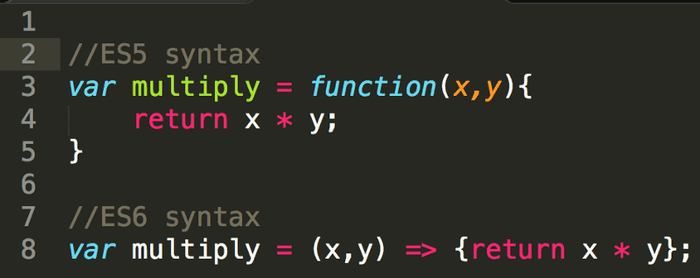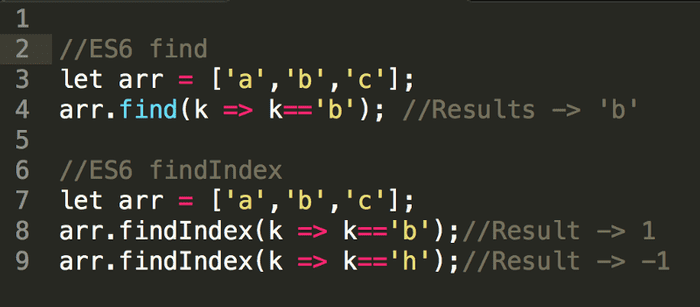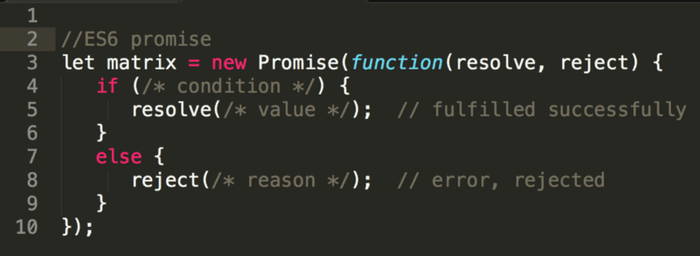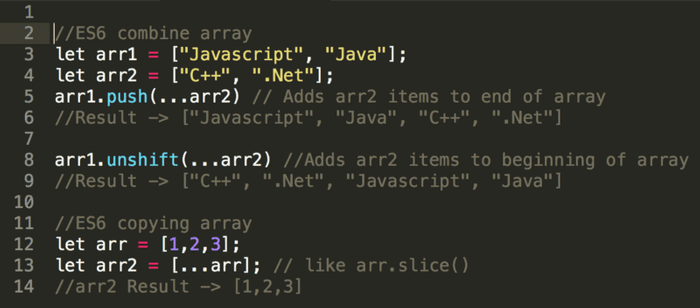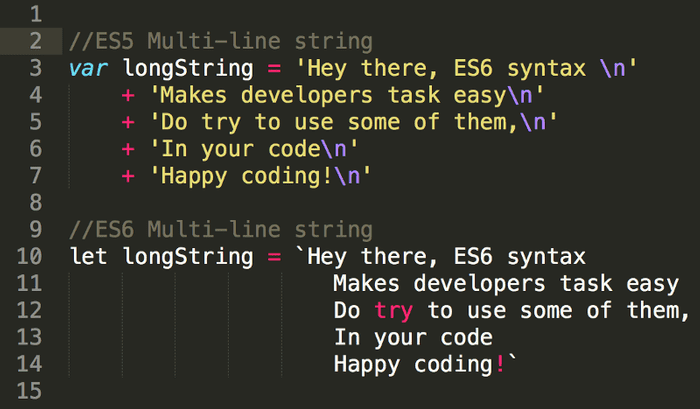« Quick walkthrough to the new ES6 syntax making developer’s job easy
December 24, 2017 • ☕️ 2 min read
Here’s the list of the commonly used ES6 features that a Javascript developer must know.
- Arrow Functions
Also know as fat function allows a developer to accomplish the same result with fewer lines of code and approximately half of the typing.These function expressions are best suited for non-method functions, and they cannot be used as constructors.
2. Array Element Finding Here is some cool trick for developer looking for the easiest way to find some elements in an array. ES6 provides 2 new Array methods find() and findIndex(). find() always returns the first element which satisfies the condition mentioned for finding some elements.
In the below example find() method returns the first element which matches the condition where element is equal to b. findIndex() returns the position where the element is found and returns -1 if it fails to find the given element.
3. let and const
The difference between let and const is that once you bind a value/object to a variable using const, you can’t reassign to that variable.
let —use block scope in programming.
const — immutable with variables.
4. Promises
Promises give us a way to handle asynchronous processing in a more synchronous fashion.
Creating Promises
The standard way to create a Promise is by using the new Promise constructor which accepts a handler that is given two functions as parameters. The first handler (typically named resolve) is a function to call with the future value when it’s ready; and the second handler (typically named reject) is a function to call to reject the Promise if it can’t resolve the future value.
Promise itself has one of the following three states:
Pending- until a Promise is fulfilled it is in pending stateFulfilled- when the first handler is called the Promise is considered fulfilled with the value passed to that handler.Rejected- if the second handler is called, the Promise is considered rejected with the value passed to that handler.
Consuming Promises
A Promise’s .then() method actually takes two possible parameters. The first is the function to be called when the Promise is fulfilled and the second is a function to be called if the Promise is rejected.
5. Spread Operator
spread operator (…) comes to handy when you want to do some quick operations on array like combining, copying, adding element at first/last position of array.
6. Template Literals
Template literals or interpolation in other languages is a way to output variables in the string. So in ES5 we had to break the string. And in ES6 new syntax ${NAME} inside of the back-ticked string makes things go easy.
7. Multi-line Strings
Declaring a multi-line string works like a charm in ES6.
Thus these were some of the most commonly used ES6 syntax which helps a lot of times to make complex operations easy and consuming less lines in your code.
To know more about ES6 follow this link.
Happy coding! 🖥 😄
